Emulate™ Excellence - PODCAST TRANSCRIPT
March 26, 2024 at 12:00 p.m.Editor's note: The following is the transcript of a live interview with Brynn Wildenauer and Kiki Redhead of Sherwin-Williams. You can read the interview below or listen to the full podcast.
Intro: Welcome to Roofing Road Trips, the podcast that takes you on a thrilling journey across the world of roofing. From fascinating interviews with roofing experts to on-the-road adventures, we'll uncover the stories, innovations and challenges that shape the rooftops over our heads. So fasten your seatbelts and join us as we embark on this exciting Roofing Road Trip.
Heidi J. Ellsworth: Hello and welcome to another Roofing Road trips from Roofer's Coffee Shop. My name is Heidi Ellsworth and we are here today to talk about color. Yes, I'm telling you, we have so many beautiful patterns, colors, materials out there. So, we brought the experts from Sherwin-Williams, Brynn Wildenauer and Kiki Redhead to talk to us about what's happening, trends, all the great stuff. So Kiki. Brynn, welcome to the show.
Brynn Wildenauer: Thank you, Heidi.
Heidi J. Ellsworth: So, we've been here before. I love visiting. I learned so much every time during these podcasts. So for everyone else out there, let's start with some introductions. So Kiki, can you introduce yourself? Tell us what you do with Sherwin-Williams.
Kiki Redhead: Yeah, I am the global color material finish and trend manager. I know that is a mouthful. So we say CMF for short, color material finish. And I lead all of our initiatives for that specific area, both in our architectural and our industrial coatings groups. We have a design house, an actual physical space in Minneapolis that I oversee. And I direct our creative and research for our trend forecasts.
Heidi J. Ellsworth: Very cool. And the trend forecast is so cool. I love it. We actually have a web, whole webinar and other podcasts about that too, so everyone should listen to it. Brynn, if you could introduce yourself and tell us a little bit about what you do with Sherwin-Williams.
Brynn Wildenauer: Yeah, so I'm the architectural and color designer for the coil business. So I work on developing color collections for customers and internal projects along with developing color forecasts and implementing them into usable color and product for specific segments and industries within the building products industries.
Heidi J. Ellsworth: Well, I tell you, I think you both just have the funnest jobs.
Kiki Redhead: It is pretty fun.
Heidi J. Ellsworth: I love it. And impressive. It's so impressive. Developing all the colors that we see every day that really mold our lives in a way. I think that's such a subliminal part of our lives as we go through and see all the different colors and the architecture and everything. So that's so cool. And part of this is as you are coming out with new products or Sherwin-Williams is, talk a little bit about your new collection Emulate architectural metal coatings. I'm so excited about this. Kiki, can you tell us what it is?
Kiki Redhead: Yeah, I have to say Heidi, I am just as excited because in my 24 years of doing color material finish and trends, this is a collection that I am so passionate about. Emulate, it's really an inspirational series. There's three different collections of these different prints and patterns, and they're essentially made to mimic natural materials. So within the series we showcase a curated assortment of popular woods, stones, metals, different color ways that would be a color scheme or a color combination maybe are some other terms that you've heard that expressed before. And so this collection is really all about taking inspiration from nature and giving inspiration to architects.
Heidi J. Ellsworth: That's cool. I love it. Well, how did it come to be? What did you see in the market that really promoted the new Emulate architectural metal coatings?
Kiki Redhead: So, we did a deep dive into research with this one, because it is just so unique in the market for a coatings company to offer inspirational prints and patterns. And so we wanted to make sure that we covered both the qualitative and the quantitative side of research. And we did that a number of ways. I'll highlight a few of my favorites. The first one is what I like to call boots on the ground, really getting out there. We visited stone yards, lumber yards, building products stores, cabinet shops, flooring stores all over the country. And what we did was, we talked to the salespeople and the store managers and the guys out moving the lumber around. What's selling, what are people being drawn to? So we were really focusing on the now in that instance to understand what colors were selling, what wood grains were selling, what type of veining or speckling in stone were anodized looks and metals going or were patinas and core tens selling more.
And so really helping us to understand that now was really, really important. But the other thing that we did was we also wanted to see then, what's next? And another boots on the ground example is going to trade shows and conferences. So walking these trade shows, looking at what these companies, these product manufacturers are getting ready to launch into the market, going to conferences like AIA, talking to groups like the National Homeowners Associations or the National Realtors Associations. Color Marketing Group, which is a big one. I've sat on the board with that organization for many years. Brynn is a member and participates in volunteers in that organization as well. And that organization is essentially the global nonprofit professional organization for color designers and color trend forecasters.
Heidi J. Ellsworth: Who knew?
Kiki Redhead: Right? Believe it or not, there's more of us out there in the world.
Heidi J. Ellsworth: Yeah, that's awesome.
Kiki Redhead: That really is the organization where the think tank from all of these different product manufacturers and pretty much every industry you can think of, comes together to talk about where color is going in their industry and where it's going next, where it's going in the next year, the next two years, three years, five years. So those elements were really important for us to understand what's coming next.
Brynn Wildenauer: And I'll add to that really quickly, that we took the granular approach of what specific part of the veining we need to focus on, how bold the veining needs to be and that type of detail. But also, how can we have the biggest impact and the biggest reach for all segments. So when I say segments, I mean how can we reach Barns in rural Canada? How can we reach high rises in Asia? How can we reach multifamily housing in wherever, suburbia. We wanted to have the biggest reach and expand our offering to appeal to as many people as we could. So we wanted to make sure we researched what the appeal was for a lot of different industries.
Kiki Redhead: And that's a great point, getting down into some of the details because gathering up samples from all these different places that we went. Sometimes I would leave some of these retail stores or some of these showrooms with my entire trunk full of four by six or four by eight samples of stone. Marble is really heavy.
Heidi J. Ellsworth: Yeah, it is.
Kiki Redhead: The car would be tipped back. I'd be looking like a low rider out on the street with all this weight. And bringing those back, and like Brynn said, almost like putting them under a microscope. Like okay, when you stand far away, you can see that there's golds and greens and a cream off-white background in this marble. But then when you really dig into the details, we can start actually pulling out some of those colors. That's part of the process, really, of understanding where can we go with the colorways. But more back to some of the research is that one of the great things about being in a large global organization like Sherwin-Williams, is all the data that we have.
Having 5,000 paint stores around North America gives us a lot of information about what colors people are buying. So we take that data in and we have whole teams that just analyze that data from all across North America, to regions, to cities. We can get really, really specific understanding of what's selling in different regions. And not just with paints, but also stains, which is really helpful for our wood collection. Because then we could look beyond wood grains and species and start looking at colors.
So we could dig into exterior body colors, exterior trim and door, as well as those exterior stain colors and really put some of the numbers behind what was selling. And look back five, 10 years and say, "Hey, you know what? Five years ago this brown was really, really popular, but it's gone down year over year over year in popularity. But this black has continued to go up in popularity. And now we've noticed for the last couple of years that black has plateaued." So we can start to use some of this information to help propel what we see as going forward. And go ahead.
Heidi J. Ellsworth: No, I was just going to say, I find that so interesting because I think about the colors in my house and what you see around you and what you're buying and paint, and then to be able to have all of that data from the entire world of what people are picking, that's incredible.
Kiki Redhead: And it's not just residential. We also have all the commercial side of Sherwin-Williams that pulls that same information for multifamily, for agricultural, for monumental and mid-rise as well. So there's just so much great information that we have at our fingertips to help support. So even when the collection might launch, it might just look like a beautiful piece of collateral with these luxurious looking finishes and really inspirational affects and finishes. We can say, Hey, we put numbers behind this as well to support our reasoning for launching something like this.
And lastly, and I don't want to forget this part of the research because it's really important. We talked to our customers. We talked to the role formers, we talked to the coders, we talked to designers and we talked to architects, we talked to printers, we talked to some of the designers in adjacent markets. Brynn has a really close relationship with a lot of the laminate design industry because she was in that industry designing laminates and the prints and the patterns for laminates before she came over to Sherwin-Williams. So we reach out to our contacts and our peers in adjacent organizations that do similar types of color work and design work, and then we apply it to our industry to meet our customer's needs, and that customer all the way down that value chain and then all the way back up as well. So we want to make sure that we're hitting the needs of the market at every step.
Heidi J. Ellsworth: Wow. I just find that fascinating. I think that's so cool. And so from all of that research you created Emulate, and there's three collections within that. Brynn, can talk a little bit about those three collections and how that works?
Brynn Wildenauer: So as Kiki had mentioned earlier, we have a wood stone and metal collection. So when we had done all of this research, which I will say continued throughout the whole duration of this product development process, but we had hundreds and hundreds of samples at the design house. The technology we used is called Rotogravir Printing, which has a lot of opportunity within it. So we had to narrow down a lot and we went back and forth a ton to dial in where we wanted things to be. We did do some existing work with patterns, so we took an existing oak pattern and updated the colors. We also did new pattern development work to make sure that we were pushing the market a little bit, offering some new inspirational ideas to the market. So we have four patterns in each collection, wood, stone and metal, that show off some new interesting capability, updated and refreshed all of the colors that are available in each collection.
And it's all just very inspirational and it's intended to be something for all of, anybody to look at. And it can be a specification guide. You can look at it and say, "Hey, I really love exactly what's in this." But you can also use it as a starting point of... We want to use this as a starting point of, "Hey, I love this. I want to change and tweak this to make it my own unique color way." So it's a great guide to help start an inspiration because it is sort of a limitless world out there with limits of course, but there's a lot of open-ended possibilities with this technology. So we're creating some new options and opportunities with this collection, which I think is really new and unique to the market, which has created a lot of excitement and engagement.
Heidi J. Ellsworth: I can attest to that, Brynn, because we obviously talk to a lot of the metal industry and we talk to a lot of the manufacturers and the role-formers and all of that. And I keep hearing this, we are putting out products that are printed and there is a lot of pride in this. So let's talk about, when I look at the board and bat and you look at all the different types of patterns now that can be out for siding and metal, but that doesn't even touch interior architecture. So let's talk about the popularity of this patterned architectural metal building products. I think it is, and I'm going to go from the exterior, because I just think it's a home run on the exteriors for what people are looking for when it comes to durability and the look that they want. Kiki, what are you seeing on that popularity?
Kiki Redhead: Inspiration from nature. I think people are focusing so much more on, I'll just use the word sustainability. The definition for each person might be different, but I think people are just becoming more and more in touch with nature around them and wanting to be enveloped in that and being a part of that. And we can go back to COVID where hiking and mushroom foraging and yard work and turning your backyard into your oasis. It started really getting people back outside and appreciating nature again. And then wanting to incorporate that. Years and years ago in interior design, there was always a saying of bringing the natures in, bringing nature indoors, bringing the outdoors in and we're seeing a reflux of that again.
And some of it is actually emulating nature on the outside of their house so that they're really, instead of contrasting nature, they're really complementing it. And we're seeing that not just in residential, but also in commercial buildings where in big cities, people are wanting to bring the nature that may be a 20 or 30 minute drive away from where they are and bring some of that into the city, maybe plant a tree in front of their building, but then also bring those prints and patterns into the design of the architecture.
Heidi J. Ellsworth: Yeah. I am seeing that exact same thing, and I'm hearing it. I'm hearing it from contractors and from the industry overall. So when you're talking about the patterns, we're also going to be talking about the different colors and the patterns and the patterns are overall, so Brynn, how many colors are available? And then talk to me a little bit about what are some of the color and pattern trends and how they were developed. I love your title of how you work on this. So talk a little bit about that process.
Brynn Wildenauer: So, in this whole Emulate campaign, we have 30 products total. So the way that we developed these is, there is a base coat and what we call an ink layer. So that's the pattern coat, and there's either one pattern coat or two depending on the pattern. It's all very variable. But we go through and pick out each color and layer and there is an opacity variability with each ink layer, depending on the pattern and how it's made. And it's very scientific and we leave that up to the experts, but it's something to be very conscious of when we pick the colors. And we work very closely with the scientists and the chemists and all of the people that work very closely with this to develop and adjust to the colors to make sure that they're exactly the vision of what we're seeing in the market trends and make sure that it's mimicking nature.
Because what we've seen in the past with the existing options in the market have looked quite artificial. Gloss gets high, they look really orangey, it looks plasticky. We wanted to make sure that we were staying away from that. So making sure that the gloss stayed low on all of the options from wood, stone and metal. That was really important to us. Making sure that the color waves looked really natural. A big part of that is the contrast level. So making sure that the value difference between the base coat and the ink layer or the pattern layer, the color difference is not too far apart. So you can still see it if you're far away that there is something happening. But when you get up close, it doesn't look artificial. So it is a big balance, which is it takes a lot of time.
So the development process of this whole collection took a very long time. Kiki's like, "Yes, it took a very long time." But that's how we ended up with 30 products total. We could have kept this going for another five years and done a bigger campaign, but we wanted to make sure it was digestible for the market. It was a sweet spot of products where it wasn't too much for our labs or anybody, any coder or any product manufacturer. We wanted to make sure it was a sweet spot for everybody involved, but giving them a good amount of options so we could really inspire and keep people moving in the positive direction where this printed trend is going.
Heidi J. Ellsworth: Well, and I've known both of you long enough to know that it's not one and done. You're constantly working on the next, what's the next color, what's the next pattern? So Kiki, I love what Brynn is talking about with all the colors and how they were developed. And let's talk about the patterns. I think that's a lot about what Emulate is and mimicking nature. So tell us about all the different patterns that you have.
Kiki Redhead: Yeah, Brynn said it so well when she was talking about how we developed some of these very specific patterns that we wanted to take some of the traditional, the existing patterns that were already out in the market and then bring some new options, more up-to-date options that will satisfy the customer of today. And so between wood, stone and metal, we wanted to incorporate something new for each look. So we have the traditional, the oaks and the walnuts, those expected looks. But also for wood, we created a new burl print and a new barnwood print.
And you can speak to the barnwood a little bit and the development of that and the inspiration for that because with a lot of the design shows that are on TV, the barndominium craze, people restoring old outbuildings on their properties and turning them into places to stay or places to yoga or places to hang out as extra living space. We're also seeing that the exteriors are mimicking or emulating some of the materials that people are using on their residences as well as the nature surrounding. So I'm going to let Brynn speak a little bit about the inspiration behind the barnwood and the burl.
Brynn Wildenauer: So, the barnwood is, I think it might be my favorite pattern out of all of them to be completely honest. So that one came out of talking to a lot of roleformers and builders that are really getting into that maybe higher end barndominium or agricultural structure type companies in the northern United States and Canada, where they want to get that barn type look, but want to have it a little bit elevated. A lot of people that we talk to really want that just elevated look, but they want it to not stand out, so they don't want something super chic next to their genuinely old barn. So making something with that balance really was something interesting to develop. And making some colorways that we wanted to make sure that fit anywhere from Montana all the way up to Nova Scotia or anywhere in between was a fun thing to do.
And with the burl, getting somewhere a little bit exotic and unique was actually pretty fun as well to get somewhere that would be really custom. We have things that are pretty standard in the market, people are quite comfortable, but we wanted to push the boundaries a bit. And a lot of the times in this market, it is pretty standard across the board with what people have to offer, but making people a little bit uncomfortable is how we get growth. And so with some of these patterns, we're pushing for a little bit of growth in the market.
Kiki Redhead: I like to call it refined, rustic. I think about the burl that really, it's almost like walking through the woods and finding a tree that fell down and then seeing that burl on the log. It gives it that really rustic type of feel. But then as Brynn mentioned, you want to have it match other elements and other things that might be on the property or other buildings that might be around it. So you don't want it to look too rustic, but you want it to look refined.
Heidi J. Ellsworth: Yeah. I love barn wood. I think that is awesome. And as you're talking about that, that makes sense because people want those looks, but they also want that rustic look. And I guess the part I really loved is we're pushing the edge just a little bit because when we talked about all the data and that, okay, these are the color trends and this is what people are picking, well, people are only picking what's there. So you have to put something out there. It's a little bit different to give them a chance to pick that. And I love that.
Kiki Redhead: We say that all the time, Heidi. When customers come to us and are asking us for pallet analysis, which is one of our big services that we do at Design House, they'll say, "Well, we can't get rid of this white because it's our white and it's our number one selling color." But the white might be so outdated. And what people don't realize, there's millions of different variations of white. The reason people are buying that white is because it's the only white you're offering. But probably 90% of the time people are like, "Well, I want a white, this isn't really the white I want, but it's the only one I can choose, unless I custom." And that custom fee on top of that for that specialty color is going to add more money to the cost of whatever it is they're trying to do for their remodel or their new build.
Heidi J. Ellsworth: That's so true. I love this. This is great. So when we're talking, and we've been talking about this a lot with how it emulates the outside and brings nature in, whether it's inside or outside. And a lot of that I think goes around sustainability too, where people are really looking for some of those solutions. And metal is a long-term resilient product. So Brynn, talk a little bit about that, around just the durability and resiliency of metal and then now having it really emulate. It makes a lot of sense.
Brynn Wildenauer: So, when we talk through about the sustainability elements of Emulate, we're preserving the natural elements of our environment by we're not cutting down a tree, but we're getting that natural wood look while we're using the metal building product. Our metal is inherently recyclable. You have the weather ability, the durability, it's cleanable. You don't have to replace your siding like you would have to a wood siding, all of the great things that go along with metal that we preach all of the time. So there's a lot of great elements about the metal products that we've been preaching for a long time, but that continues to be said with Emulate.
Heidi J. Ellsworth: Yeah. Sometimes Kiki, when visually you see something, it connects a little bit more. And so having that emulate with that connection of nature, it does bring on that it's going to stand up against weather, corrosion, rust, stains, chemicals. I don't know why, but even though we already know it does, that color also helps click it in a little bit further. Can you talk to us a little bit more about that?
Kiki Redhead: Yeah. You are not going to have termites that are going to eat your metal siding. And we use, with our chemistry and our product platforms, the highest grade resins and the highest grade pigments. And all of these elements that come together to create that formulation and then create that actual product, we're making sure that we can offer the better, best qualities out there in the market so that the contractor or the building owner or the homeowner can choose the right product for them and make sure that it's going to stand the test of time.
Heidi J. Ellsworth: Yeah, it's great. So okay, where can people find the Emulate collection? I'm going to say here, since the folks who are listening to this are our contractors, where can contractors find the emulate collection and get started presenting that and selling that to homeowners to get on their homes? Brynn?
Brynn Wildenauer: So, we've got a lot of information on our website Coil.Sherwin.com. We're also starting to roll out on our social platforms on LinkedIn and Instagram. You can follow Kiki and I on LinkedIn as well. We're posting pretty actively about it. And we've been pretty active on here presenting some information about it as well. So we're being pretty active on it to make sure that we're getting the word out.
Heidi J. Ellsworth: I love it. And yes, you can find all this information on the Sherwin-Williams directory on Rufus Coffee Shop and on Metal Coffee Shop. It is a great place to get that information, figure out how to do it. And really as a contractor, ask your distributor or your sheet metal role former for this. Are they offering it? Because I'm hearing it, I'm hearing a lot of different manufacturing companies that are implementing this and are launching it out there. So you can find it. You just need to ask, and you can find a lot of that on Metal Coffee Shop, on all the directories. Because I know there's a number of manufacturers on there who are starting to produce this and is getting out into the market, and we're starting to see some awesome case studies. So ladies, thank you.
Brynn Wildenauer: Thank you so much.
Kiki Redhead: Thank you. It was great to be here.
Heidi J. Ellsworth: I always learn so much on this. Who knew? What you all do with color, I just think is inspirational. So thank you for what you do and thank you for being here today.
Brynn Wildenauer: Thank you. We'll talk soon. Bye.
Heidi J. Ellsworth: Bye. And thank all of you for listening today. Please check out all of the Sherwin-Williams directories on Metal Coffee Shop, Roofers Coffee Shop. All the articles. There is so much great stuff on color, the trends report, you can't Imagine. Plus, we've been on with Kiki and Brynn in the past on podcasts and webinars, so lots of information that you can get. Also, check out all of our podcasts under the Roofing Road trip segment of our RLW navigation on Roofers Coffee Shop, and also on your favorite podcast channel. Be sure to subscribe and set those notifications so you don't miss a single episode. We'll be seeing you next time on Roofing Road trips.
Outro: If you've enjoyed the ride, don't forget to hit that subscribe button and join us on every roofing adventure. Make sure to visit RoofersCoffeeShop.com to learn more. Thanks for tuning in, and we'll catch you on the next Roofing Road trip.
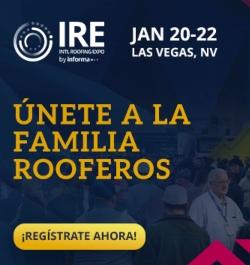



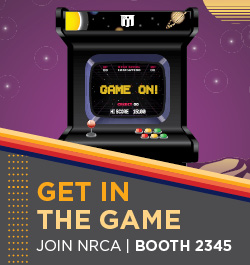








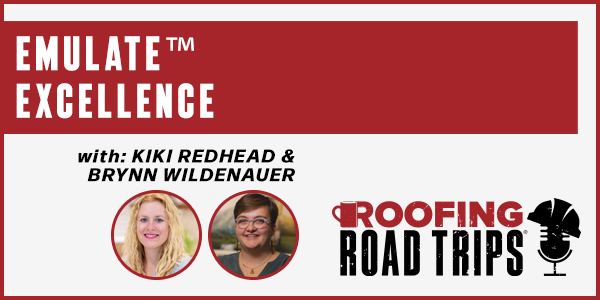
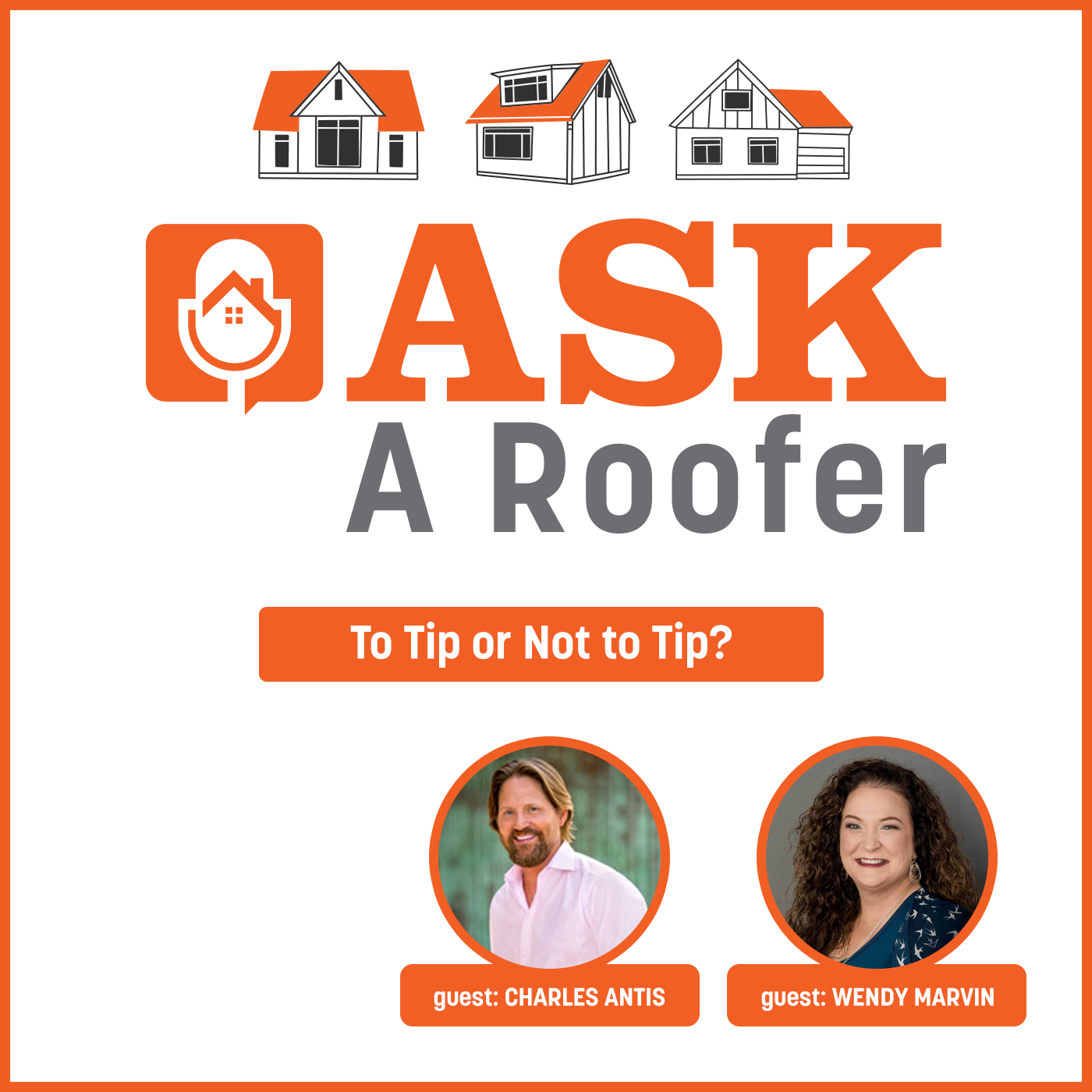
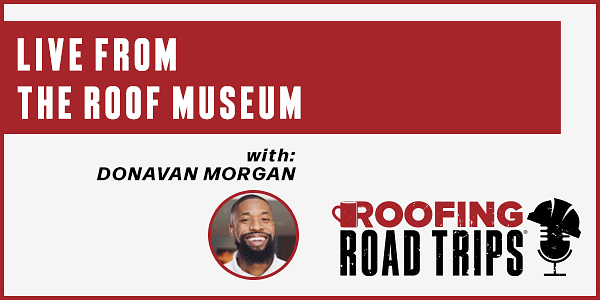
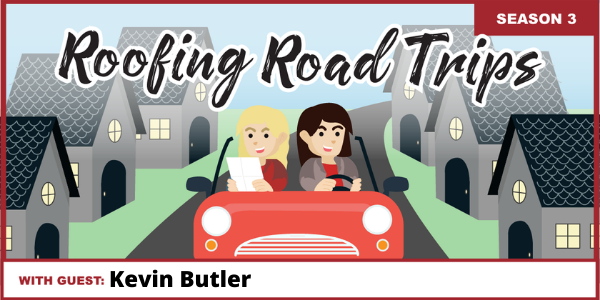

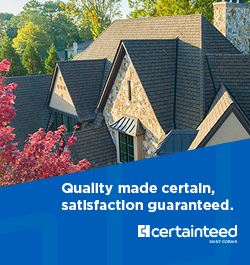
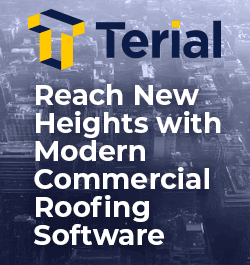

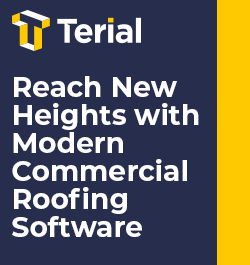

Comments
Leave a Reply
Have an account? Login to leave a comment!
Sign In